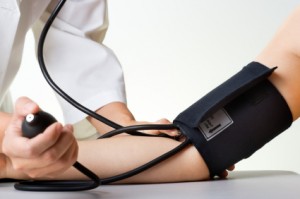Bank of America Chicago Marathon Spectator Guide: Tips for a Fun-filled Day
Editor’s Note: Today’s entry is written by Jenny Short, PT, DPT, ATC, Athletico Endurance Program member and participant in this year’s Bank of America Chicago Marathon.
With the 2013 Bank of America Chicago Marathon quickly approaching, chances are you know someone who will be running or walking in it. We are lucky to have one of the World Major Marathons in our own backyard (Boston, New York, Berlin, London, Tokyo, and Chicago). Elite runners come from all over the world to run in the Chicago Marathon and enjoy the Windy City. They have logged hundreds of miles and prepared all summer but there is one critical component left…you the spectator! Having run Chicago the past two years, I cannot emphasize enough the impact the crowd has played in my Marathon performance. The energy of the crowd, the signs, and the support throughout the full 26.2 miles has kept me motivated and helped me finish strong. Friends and family have come out to support me and have had a blast watching the race. This is a compilation of tips from me, my friends, and family on the best way to view the marathon! (more…)
Heads up on Concussions
Imagine you are at a high school football game watching your son play when you see that hit. The one that you know doesn’t look right. His head was down and he drove right into someone, or the one that he went helmet to helmet with an opponent, or even the one where his head bounced off the ground. The next thing you know, the school’s athletic trainer calls you down from the stands to tell you that your son has suffered a concussion.
The topic of concussions is on the rise. Concussions don’t just happen to football players, they can occur in any sport. Knowing some of the signs and symptoms to watch out for and what to do for them is essential to the health of your son or daughter. (more…)
6 Conditions You May Not Realize Physical Therapists Treat
Every year in October, we celebrate National Physical Therapy Month. There are many individuals that have seen a physical therapist (PT) for common reasons such as low back pain or knee pain. There are many different conditions, however, that PTs may treat that you may not be aware of. In order to keep up their professional license, PTs are required to take continuing education courses. Often, these courses may give a therapist a special set of skills for treating a certain condition or diagnosis. The following is a list of conditions that many individuals may not be aware that can be treated by a PT. (more…)
Alleviating Headaches with Physical Therapy
Treating a patient who reports frequent headaches is one of my favorite diagnoses to treat. Why do I love treating headaches so much? I love treating headaches because physical therapy can be so effective in providing the patient with relief quickly, and relief from a headache problem is a big deal for someone who suffers from them. (more…)
3 ACL Injury Risk Factors You Can Change
I was recently asked by ESPN’s Sports Medicine Weekly radio show to do an interview related to a recent article in the Chicago Tribune covering the recent increase in anterior cruciate ligament (ACL) tears. The article states that over the last decade, some orthopedic groups have seen a 400% increase in torn ACLs and that a huge segment of that growing population is female. In fact,some studies have shown that females can be up to 8 times more likely to tear their ACL than males playing the same sport, so I’d like to focus on that segment of the population. During my time with Dr. Cole and Steve Kashul, we covered some of the reasons why the increase in these injuries is happening, but I’d like to take this opportunity to briefly expand on some of the ideas brought up in the interview. (more…)
Can I Get Your Number?
Are you healthy? How do you know? What do you use to evaluate your level of health? In today’s culture, we have become health-obsessed. What IS healthy anyway?!
Size and shape, along with many other health indicators will vary from person to person depending on a thousand factors (age, family history, genetics, gender, etc). Health is certainly not one-size-fits-all. But, we can still utilize some tools to get a snap shot of your current health. Here are some basic health numbers that you should know. These numbers, all together, can give you a good idea of your overall health.
 Blood Pressure: Your blood pressure should be less than 130/80, but ideally it would be around 115/75. High blood pressure puts you at risk for many complications including heart disease. The good news is that by being proactive, many people can avoid medication through diet and exercise. Make sure you know your current blood pressure and talk to your doctor about what is healthy for you.
Blood Pressure: Your blood pressure should be less than 130/80, but ideally it would be around 115/75. High blood pressure puts you at risk for many complications including heart disease. The good news is that by being proactive, many people can avoid medication through diet and exercise. Make sure you know your current blood pressure and talk to your doctor about what is healthy for you.- Cholesterol: This is tricky. There is ‘good’ cholesterol and ‘bad’ cholesterol and triglycerides. It is hard for a non-medically trained individual to keep track. That’s why we have doctors. Make sure this is being checked yearly (or more often if you are in the high risk zone). Basically though, you want your LDL (“bad”) cholesterol below 100 mg/dL and your HDL (“good”) cholesterol above 50 mg/dL.
- BMI: This is your Body Mass Index and it is a measure of your body fat based on your height vs. your weight. To calculate your BMI you can click here or Google “BMI calculator”. A BMI of 25-29.9 is considered over-weight, and BMI of 30 or more is considered obese. You want your BMI to fall into the 18.5-24.9 range. There are, of course, many more factors than height vs. weight to determine what is right for you, but this can be a good start.
- Waist circumference: Lately this measurement has been gaining popularity in the medical community. We have learned that more important than your weight is the distribution of your weight. If you carry your weight around your middle, you are at a higher risk than if you carry your weight in other areas. You want to measure your waist at its narrowest part. If you don’t have a noticeable narrowing or waist, you can measure across where your elbows fall with arms at your side. Your risk increases for many health conditions with a circumference of 40+ for men and 35+ for women. But perhaps the best way to calculate this is to compare your waist to your height. Your waist should be less than half your height. For example, I am 5’6” which is 65 inches. Half of 65 is 32.5. Therefore, my waist should be less than 32.5 inches at its narrowest point.
- Hours of sleep: Are you surprised to see this on my list? This is one indicator of good health that is too often ignored. Most people require 7-9 hours of consecutive sleep for optimal health. When we sleep, we heal, recover, and grow. People who get enough sleep have more energy, stronger immune systems, less pain, and weigh less than people that do not get enough sleep. Don’t brush off the importance of sleep. Watch less TV, leave the laundry for the weekend, and put the computer away (after you read my blog of course). If you are having trouble sleeping, ask your MD for suggestions.
- 1-10 Scale: Last, and certainly not least, is your personal score. How would you rank your health on a scale of 1-10? 10 would be ‘never been better, full of energy, bounce out of bed in the morning, happy/content’ and 1 would be ‘every day is a struggle, always sick, no energy, overweight, depressed, etc.’ If you were truly honest with yourself, what would your number be? Anything less than 8 should be unacceptable for you! This your one chance at life, so let’s enjoy every minute of it. I feel like Jerry McGuire – who’s coming with me???
If you are not where you want to be, don’t worry. This is not meant to make you feel bad; it is meant to empower you to take control of your health. Get a physical, get some good sleep, and get moving! Let’s all live the rest of 2013 in way that leaves no need to make resolutions in 2014.
Sources:
www.sleepfoundation.org
www.mayoclinic.org
www.heart.org
Knee Replacement Surgery: What to Expect
Knee replacements are one of the most common orthopedic surgeries performed today. It is used as a treatment for end stage knee osteoarthritis when other conservative treatments have failed. Recent advances in surgical technique, including the minimally invasive method, have made it a successful option for an individual who cannot tolerate simple daily activities due to the pain of arthritis. Here is a synopsis of what to expect with your hospital stay, recovery, and outcomes following a knee replacement. (more…)
Adding 3D “Fun”ction to Your Walk or Run: Part 2
We hope you all had fun learning and applying “3D” as it relates to the human body. To quickly review we discussed the sagittal, frontal, and transverse planes of movement and demonstrated in words/video how each plane worked. (Did any of you take our 3D quiz for a chance to be entered into a raffle for some fun prizes?) As humans, we were meant and designed to move in all these directions; yet, with many modern conveniences and sedentary occupations, we seem to move less and less. Maximizing multi-planar motion will not only help your movement, flexibility, agility, fitness and strength, but it will also train your proprioceptors to better respond if you trip, slip, reach/lift at an awkward angle, or do a quick direction change when playing a recreational or competitive sport, oftentimes significantly lowering your potential injury risk. (more…)

